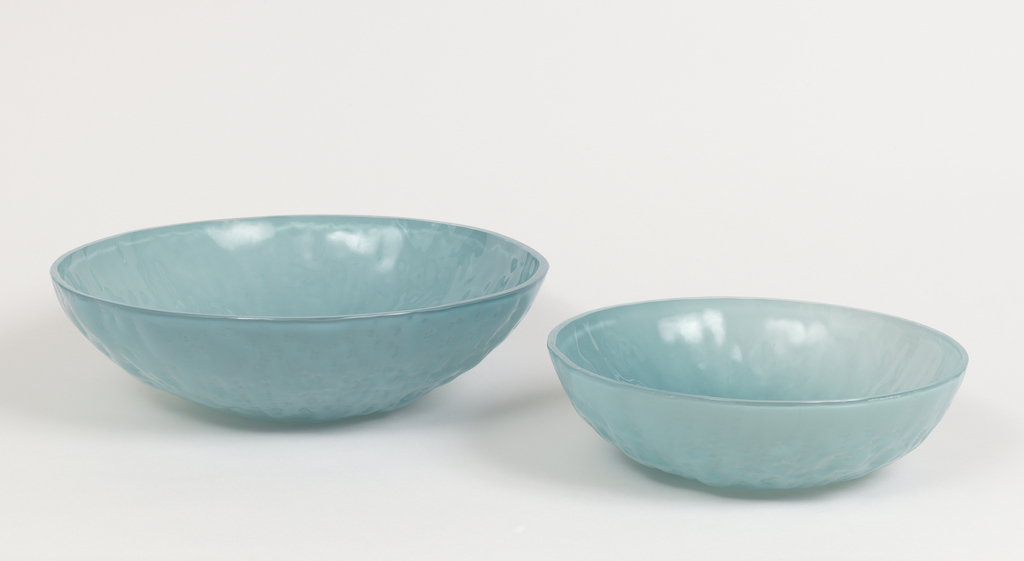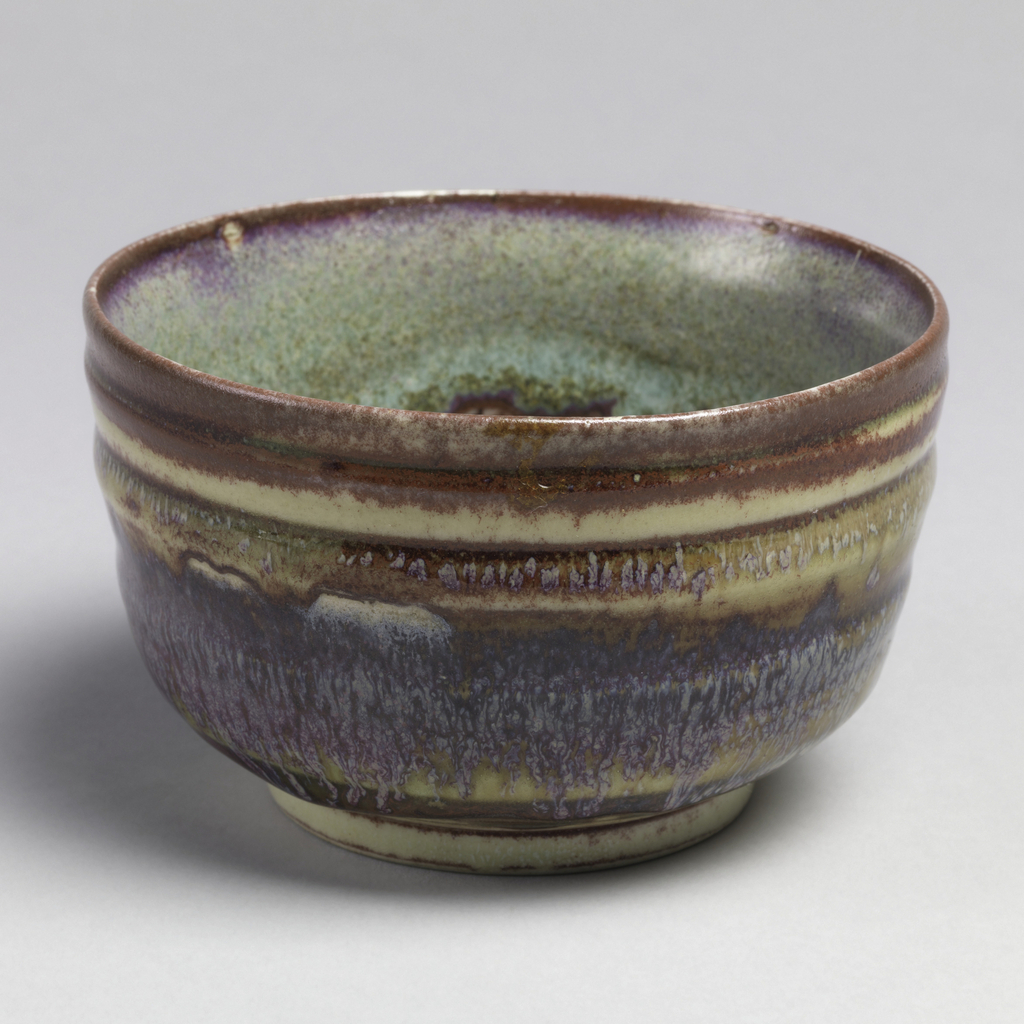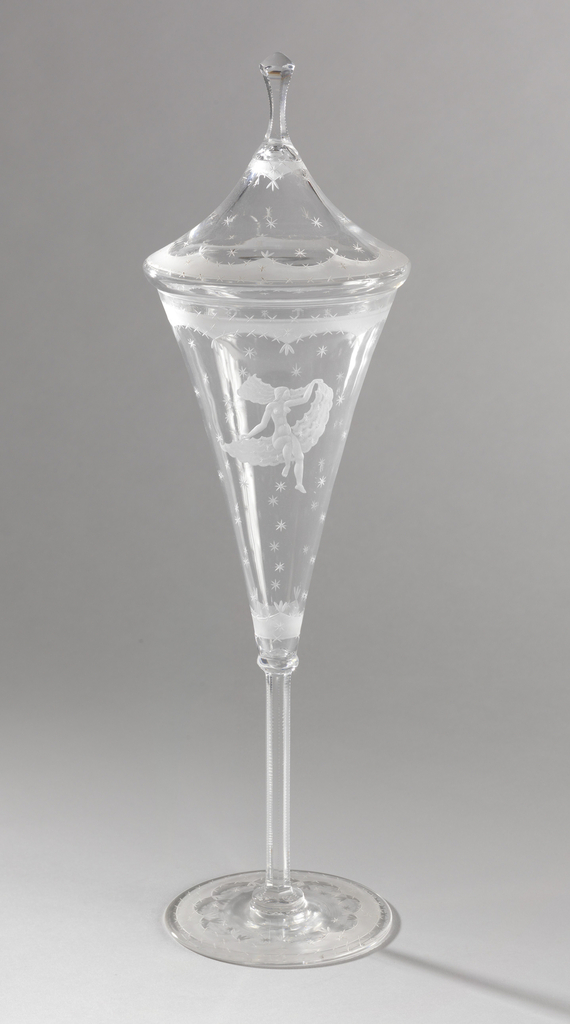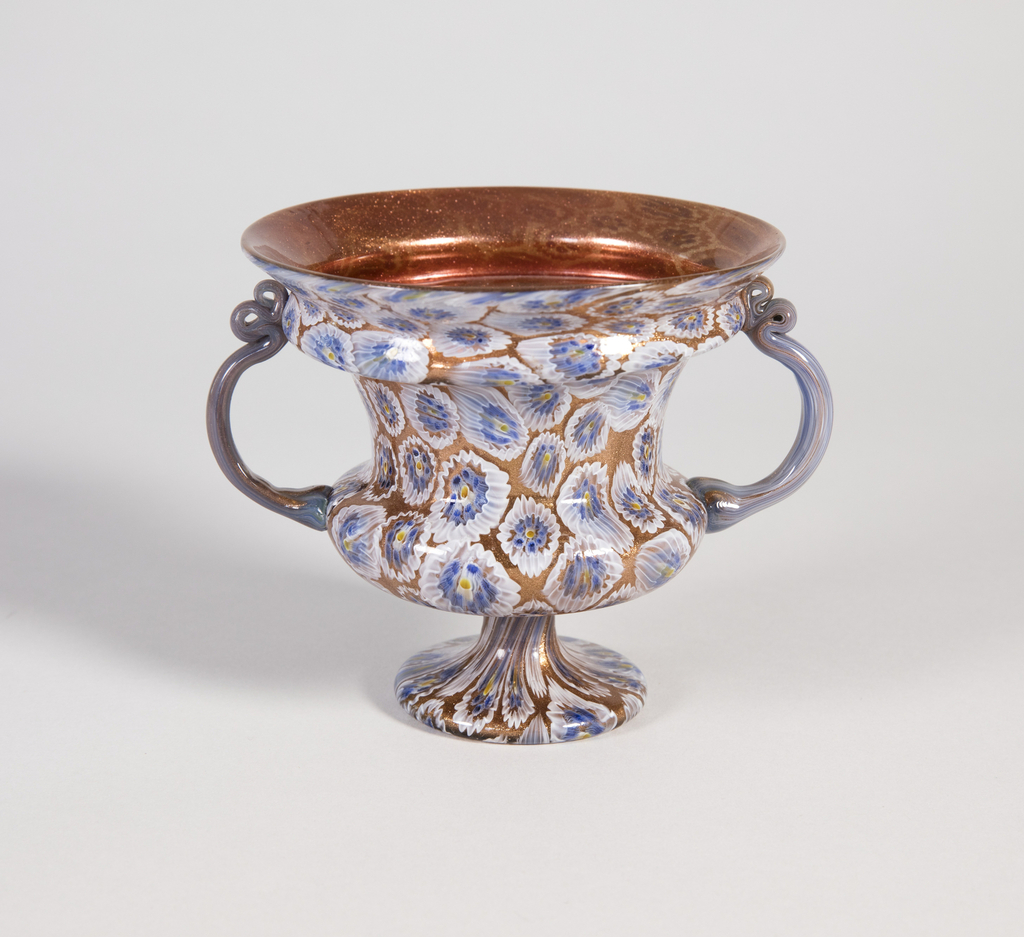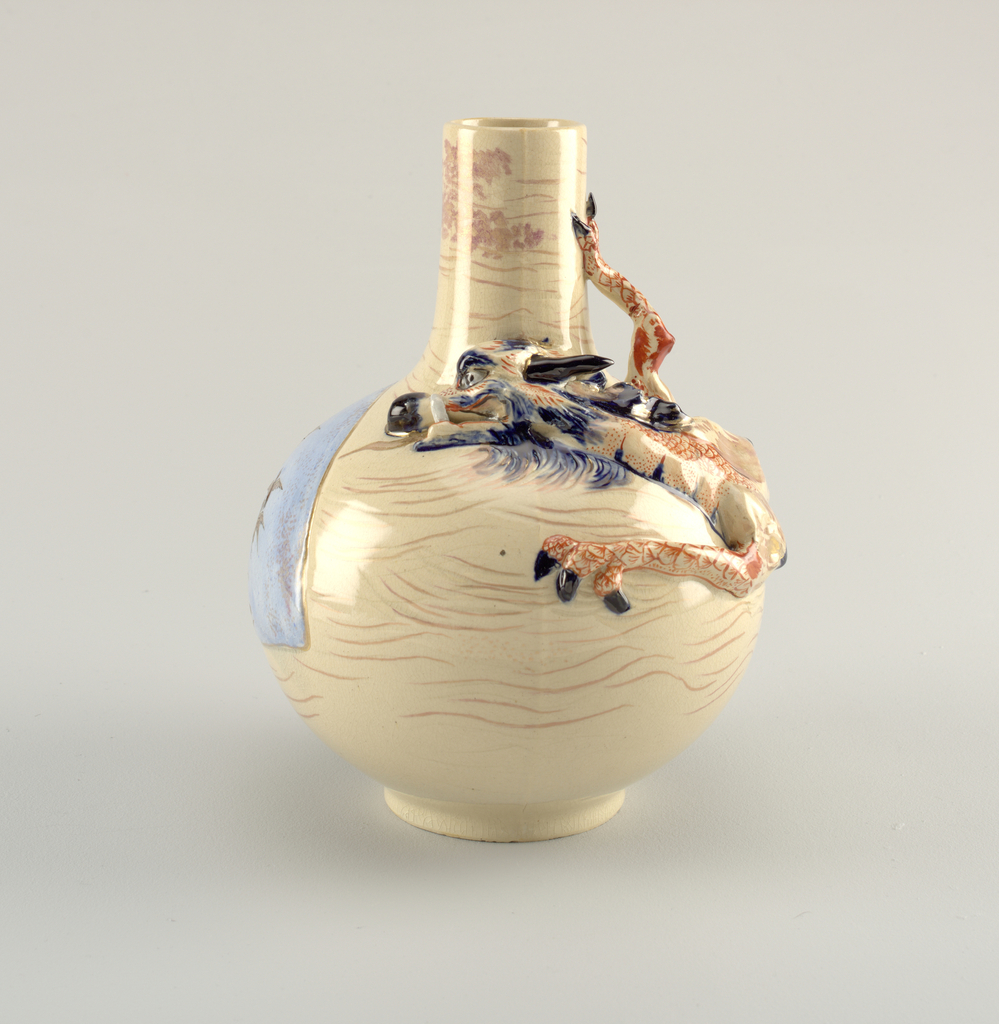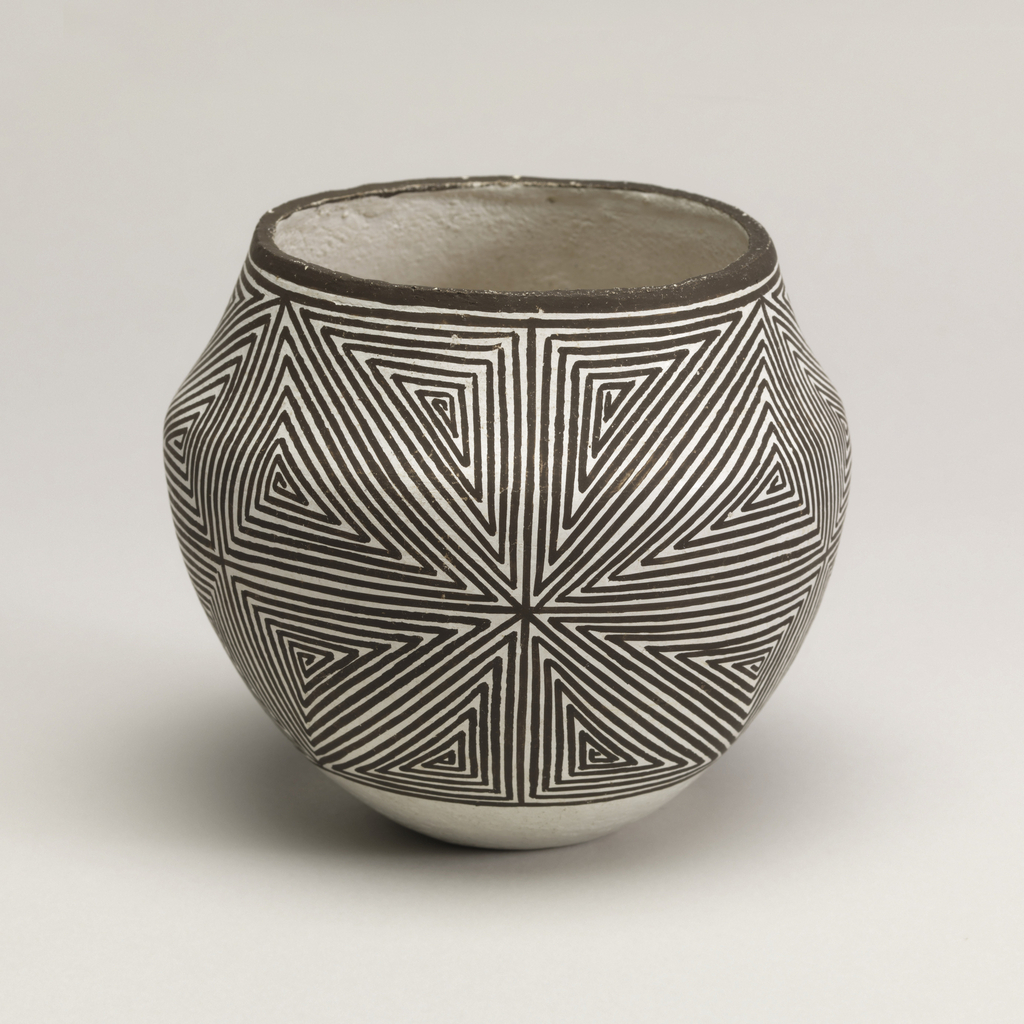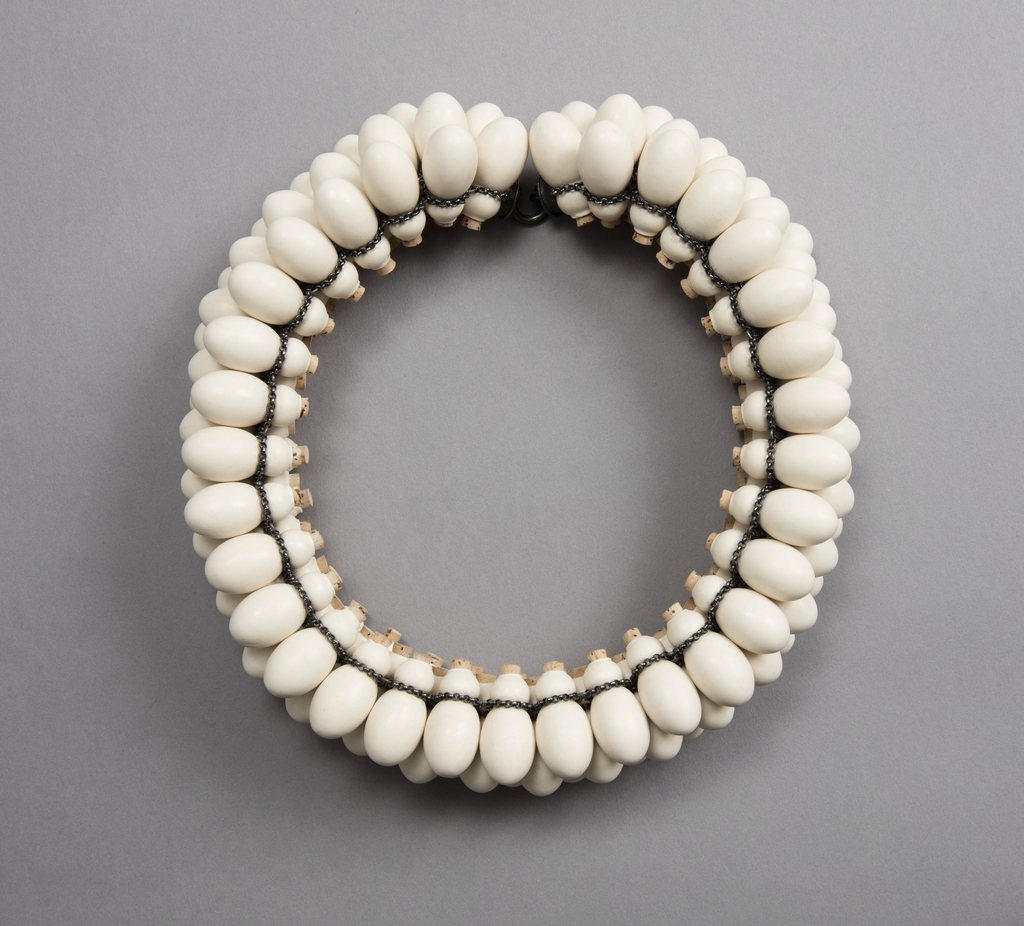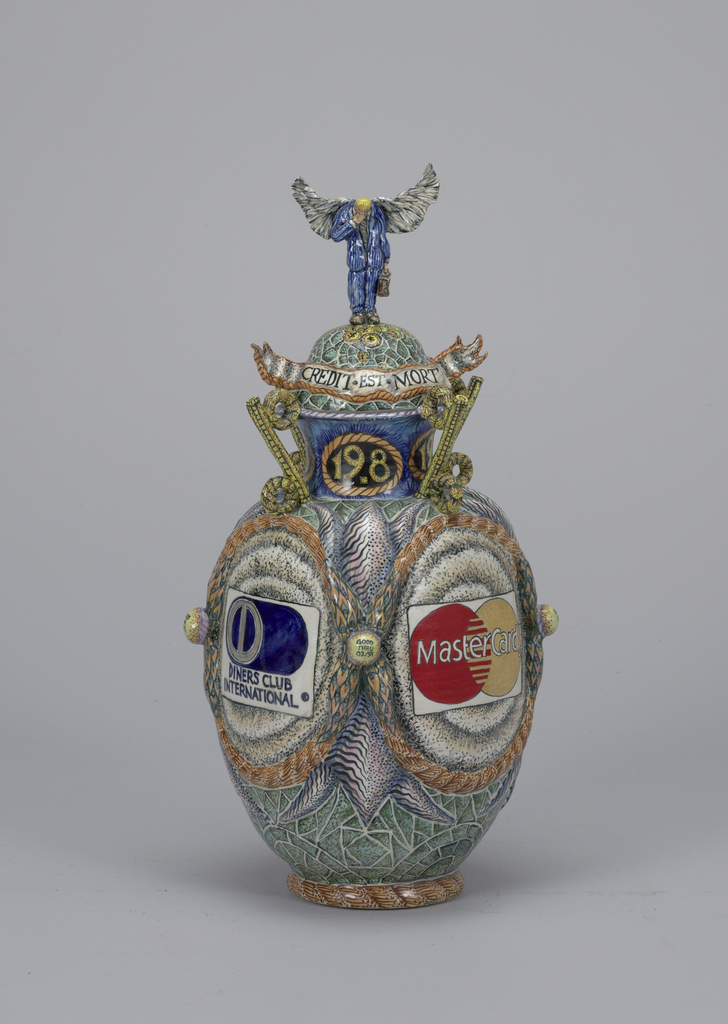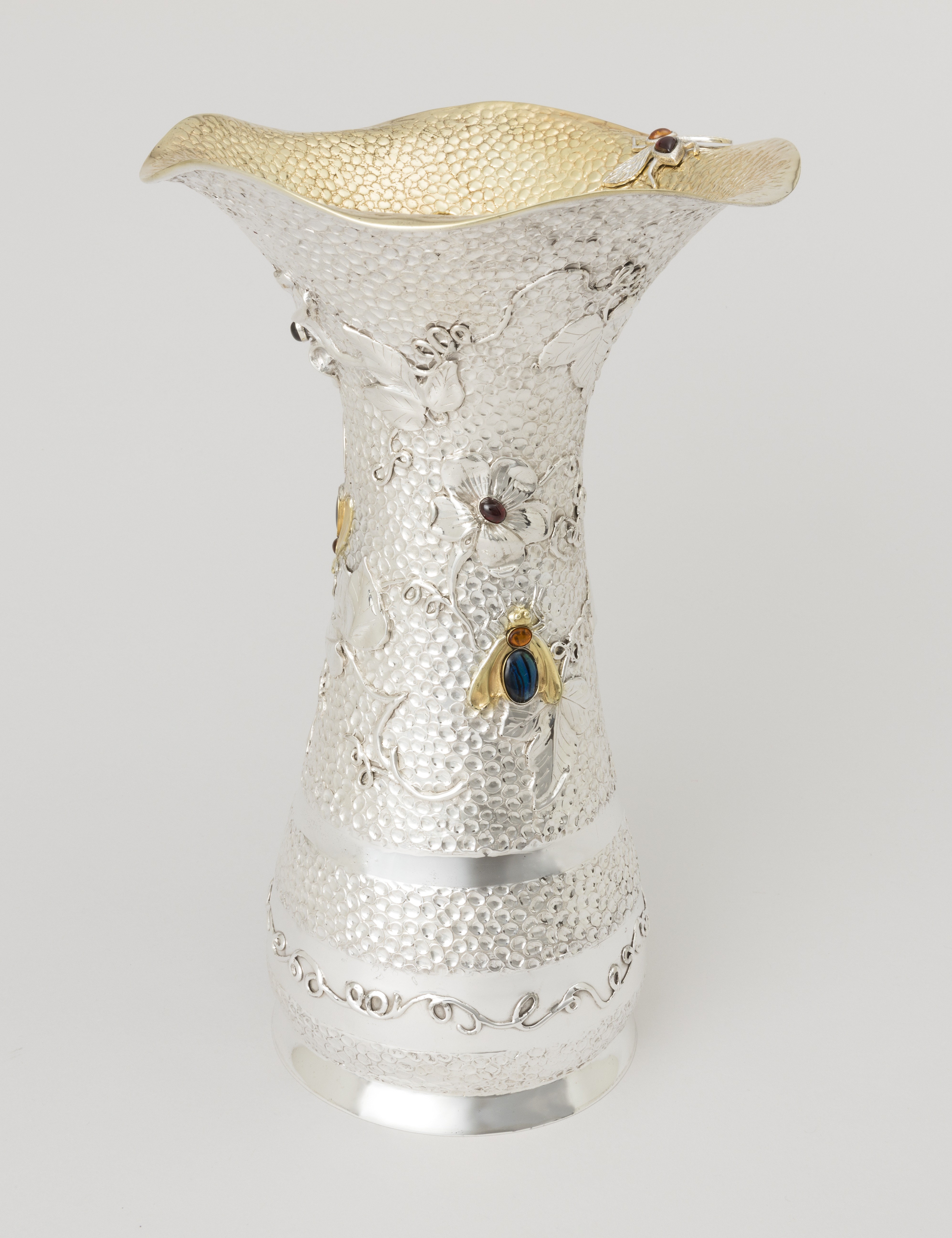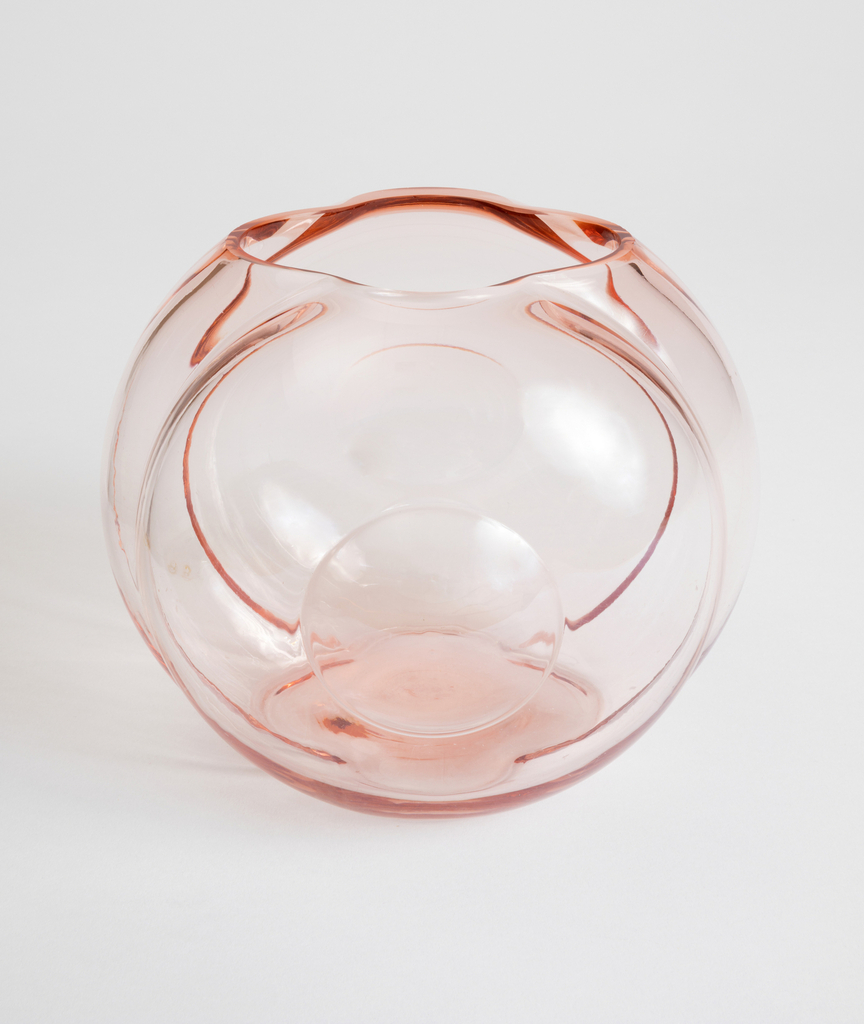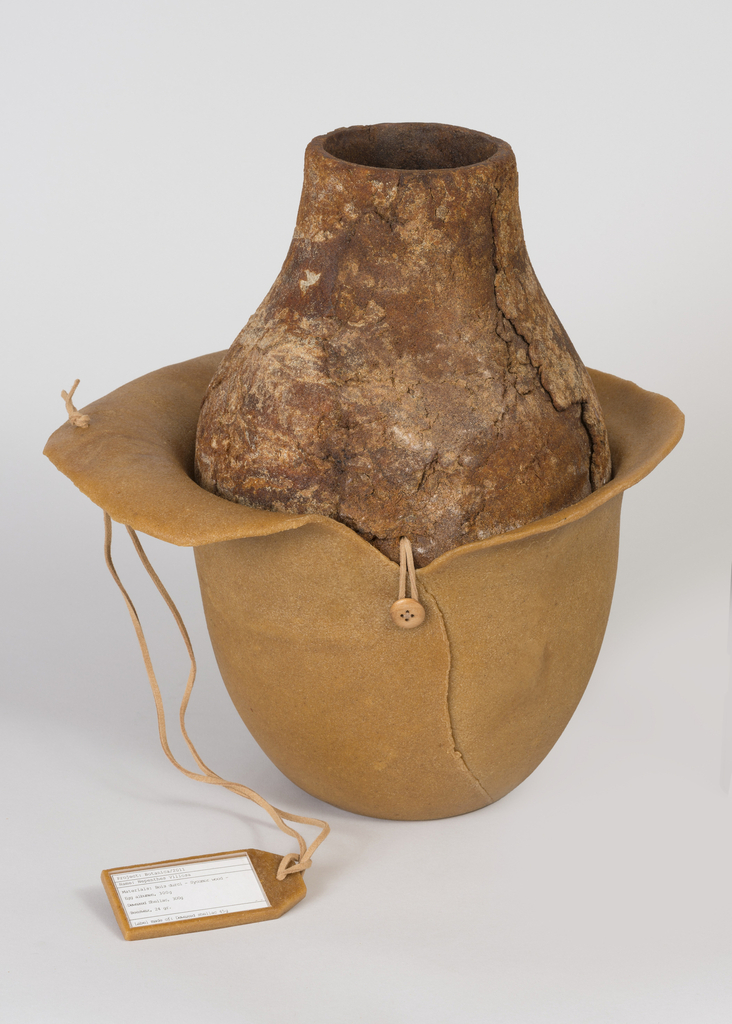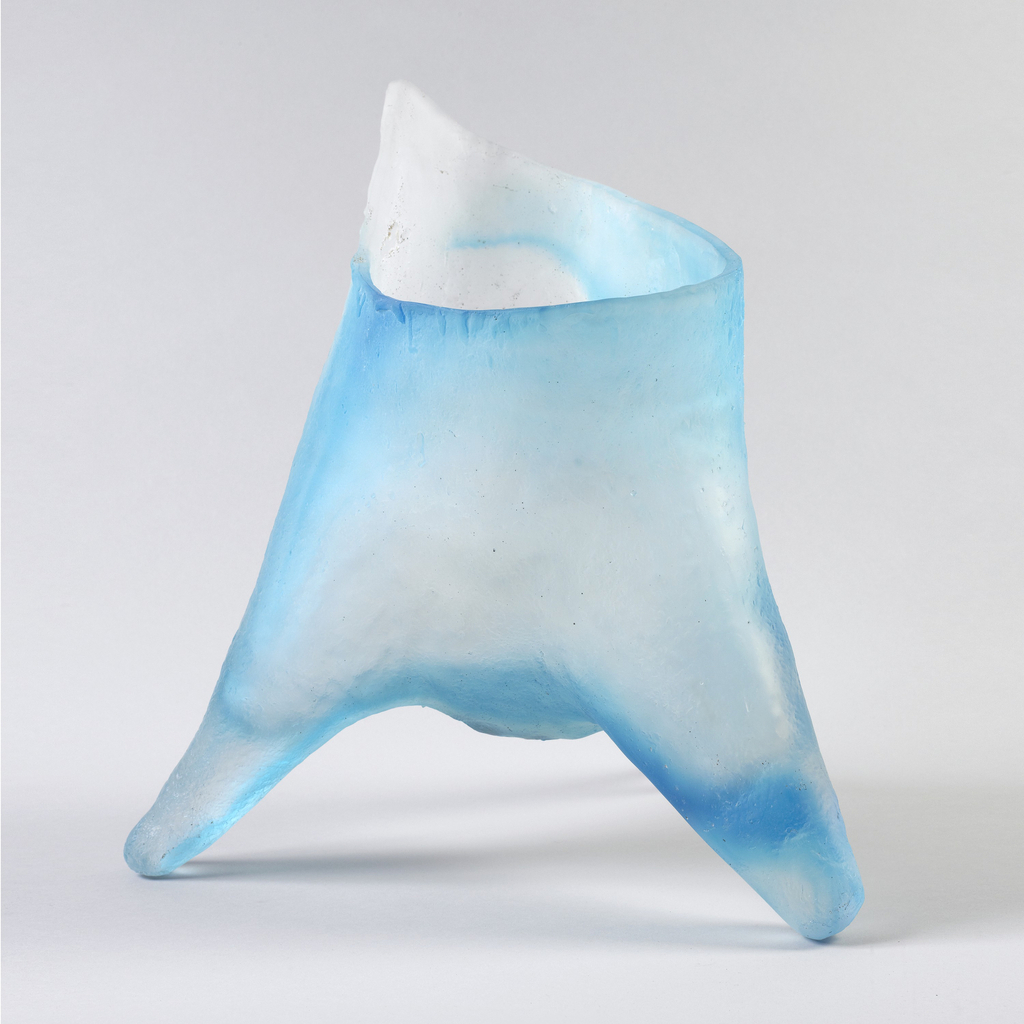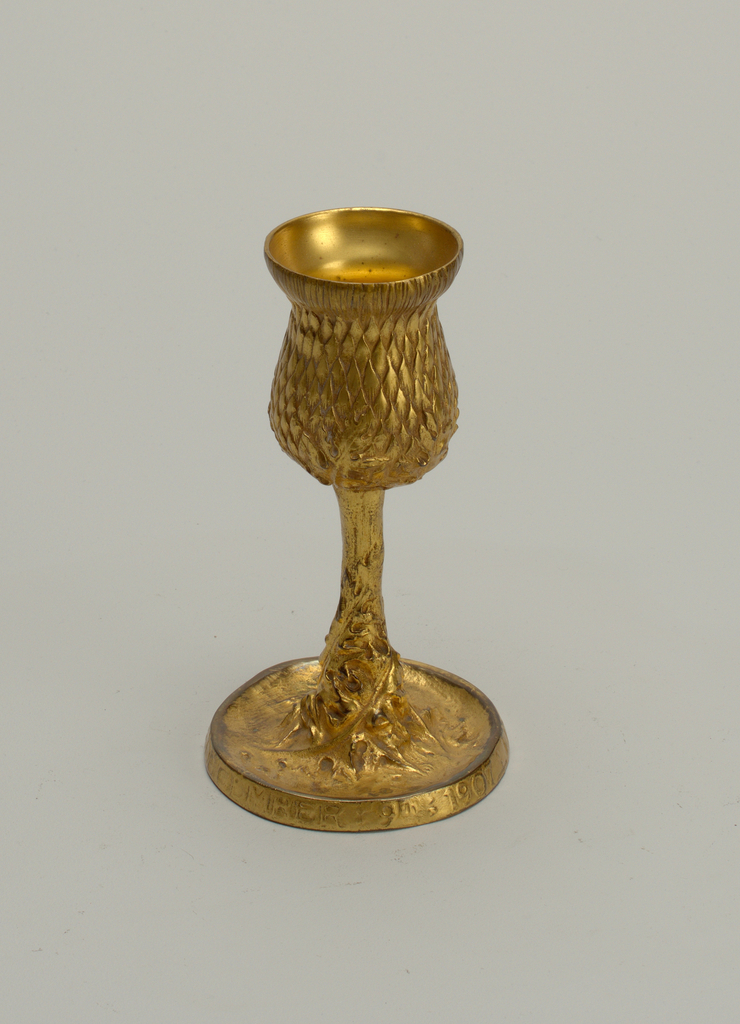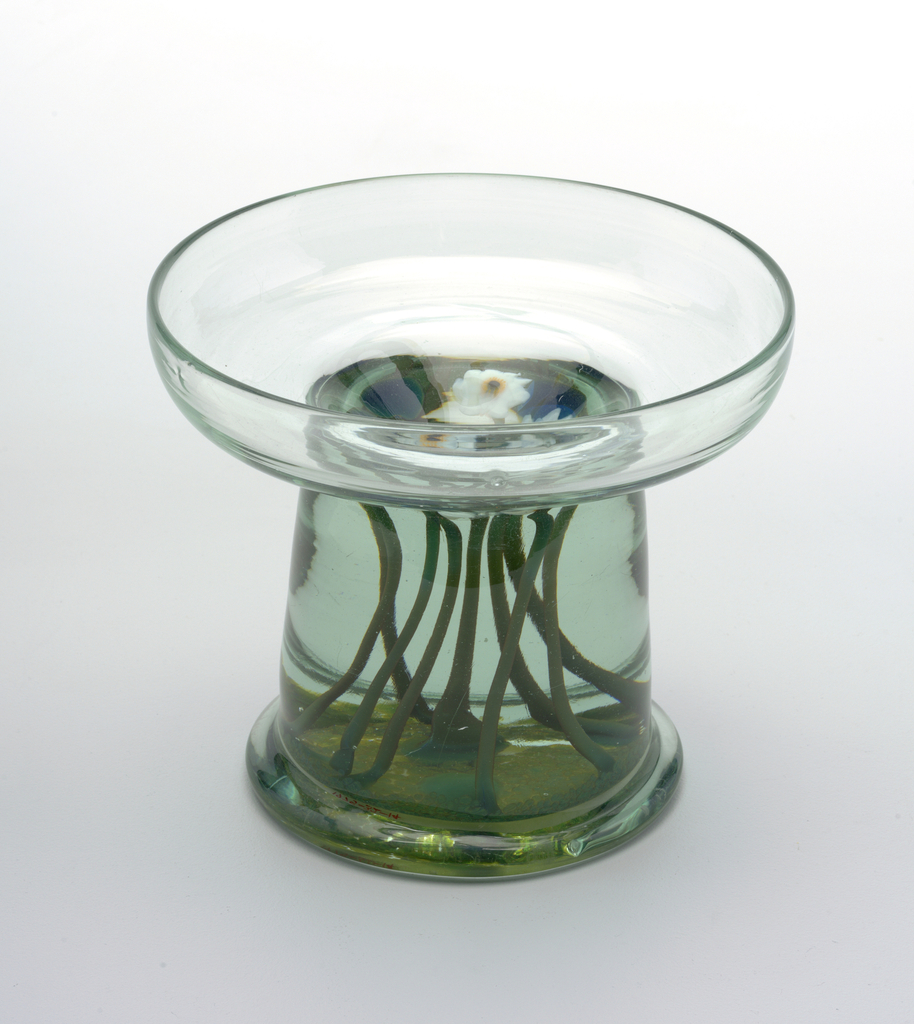Innovative designer, Emilio Godoy, first came to the museum’s attention for his concerns about environmental sustainability, materials, and efficiency in production. His Pablo and Pedro glass project emerged from “the analysis of the energy used in glass manufacturing, in particular, the energy and resources needed for the fabrication of metal molds” used to form glass...
In celebration of Women’s History Month, March Object of the Day posts highlight women designers in the collection. Louisa Etcheverry was born into a family of potters in California in 1911. Her uncle, Fred Meyer, was the founder of Meyer Pottery in Vernon, California, where her father worked and where Etcheverry herself started working in...
This tall glass covered vessel was designed in 1923, by Edward Hald, artistic director of the Orrefors glassworks in Sweden. It features engraved decoration of a female figure seated on a fluttering banner, amid a field of stars bordered by scalloped bands. The delicate star and band motifs are carried through in the vessel’s tapered cover...
This urn-shaped vase represents important historic glass making techniques whose possibilities were expanded during the revival of glass production in late 19th-century Venice. The form features two spectacular variations of glass for the viewer to enjoy and ponder. At first glance, the most eye-catching feature is the inner layer of avventurina (also known as aventurine), the metallic copper-toned...
In celebration of Women’s History Month, March Object of the Day posts highlight women designers in the collection. This dragon vase was made at Frederick Dallas’s Hamilton Road Pottery by Maria Longworth Nichols. Nichols worked there before founding her own firm, Rookwood Pottery, later in 1880. This example is marked with a number “3” on...
In celebration of Women’s History Month, March Object of the Day posts highlight women designers in the collection. Today’s blog post was written by Rebekah Pollock and originally published November 19, 2016. Lucy Martin Lewis learned to make pottery from her great-Aunt and other women living in Sky City, a remote three hundred foot high sandstone...
You might think that this pitcher looks a bit like crushed ice, and perhaps the illusion is intended. This isn’t just any old pitcher, but a champagne pitcher, and it is special because of its so-called “bladder.” Within the body of the vessel, underneath the handle, is a cavity in which ice can be inserted,...
Ceramic beads have been used in jewelry for millennia. Recognizing the utilitarian quality of this material, Peter Hoogeboom chooses it as the primary material for his neckpieces. Hoogeboom had noted historical ceramic jewelry in museums yet did not often see clay used in contemporary jewelry. Through experimentation he found that the slip casting technique allowed him...
This reliquary vase, created by Matt Nolen, is featured in the exhibition, The Virtue in Vice, currently on view at Cooper Hewitt. The vase was selected as a visual interpretation of greed, here defined as the acquisition of large sums of money, universally recognized as the hallmark of avarice. Though tongue-in-cheek, Nolen’s reliquary pointedly illustrates...
Michael Izrael Galmer was born in 1947 in the former Soviet Union, living there through much of the Cold War. Despite the difficulty of these years, Galmer attended Moscow University, earning a Ph.D. in physics while pursuing his interests in drawing, painting and sculpture, looking to nature for inspiration. As a student, he did not...
In 1929, George Sakier was hired as a consultant for the well-established American glass manufacturer Fostoria, for whom he would work for the next fifty years. With a background as an art director of French Vogue, Harper’s Bazaar, and Modes and Manners magazines, Sakier’s commercial savvy as well as his eye for trends served him...
The honey-colored Botanica VI vase (Nepenthes Villosa) is composed of bois durci (sycamore wood and egg albumen), dewaxed shellac (a resin extracted from insect secretion), and beeswax. Part of the Botanica series, it represents a collection of vessels made from pre-industrial plastic that were created by Studio Formafantasma, a conceptual design practice known for its...
Don’t get these twisted: the Via Portico d’Ottavia is an area of ancient ruins in Rome, located in the center of the neighborhood designated as the Jewish ghetto in the sixteenth century. The Roman emperor Augustus, known for ushering in the Pax Romana period of relative peace and stability for the empire, originally built this colonnaded...
This gilded goblet was made for a special dinner in honor of Andrew Carnegie given by the Engineers’ Club of New York on December 9, 1907. The name of the club and the date of the dinner can be seen along the edge of the goblet’s base. Carnegie had donated $450,000 for the organization’s new...
In July of 1913, Arthur Sanders, a gaffer at Tiffany Studios, was sent on a dream of a business trip. He traveled to Hamilton, Bermuda to study marine life through a glass-bottomed boat. Sanders observed the beauty of the underwater world so that he could later reproduce it in glass when back in Corona, New...
